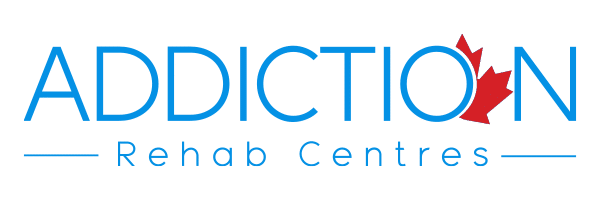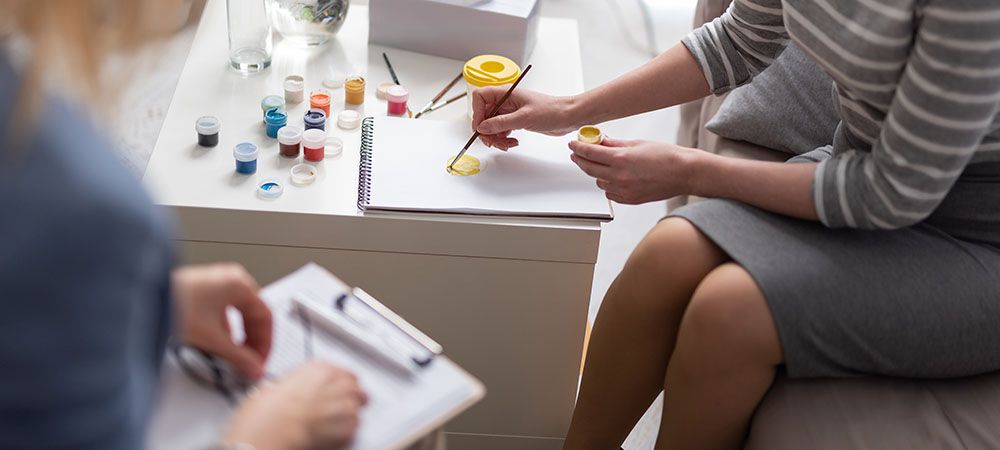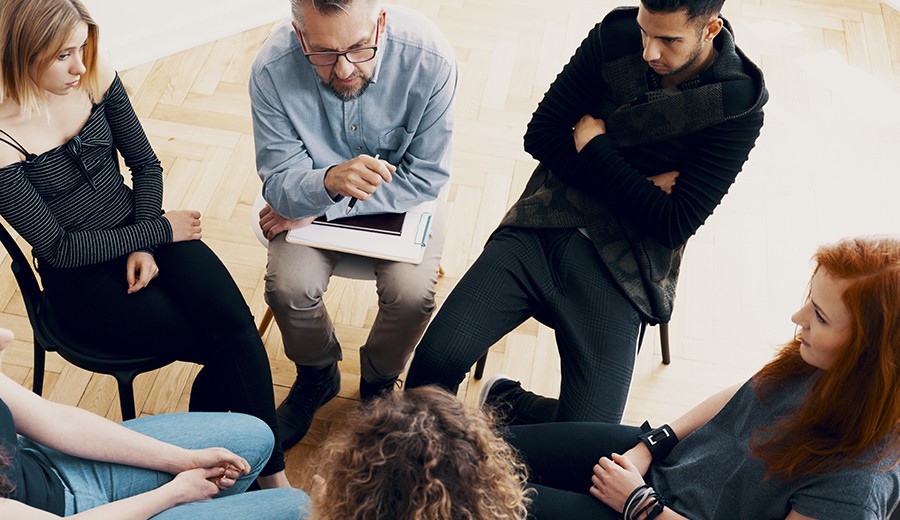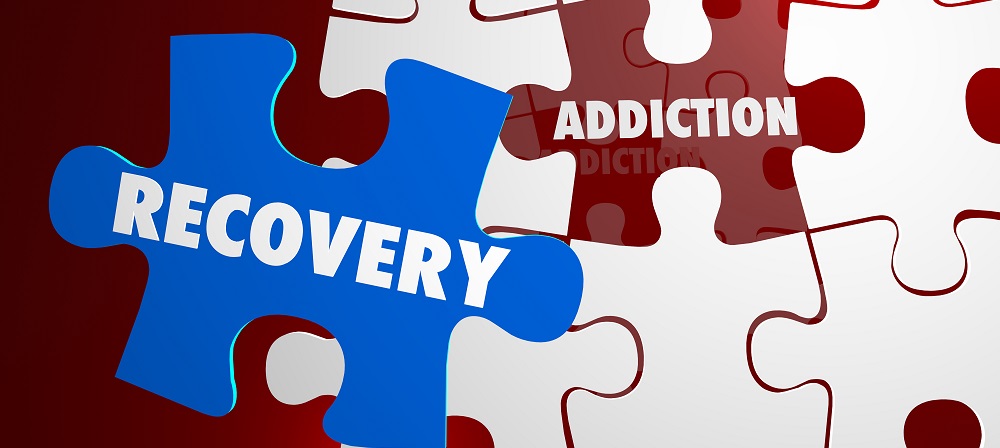Art Therapy as an Addiction Treatment Tool
What is Art Therapy?
Art therapy is a treatment tool where the patients express themselves and work through difficult emotions through their own creative process. This type of therapy is not necessarily to hone artistic skills, but about self-expression when the individual may not be comfortable speaking to or precisely articulating their past experiences. Art therapy is an effective tool in addiction treatment as the patient may have had a wide range of complicated experiences while under the influence of drugs and alcohol that may be difficult to articulate in words – but they had a strong connection to the way they felt. Art therapy not only focuses on the patient’s past experiences and healing process, but is also used as a tool for looking towards the future, and what the patients are striving towards, as it helps to develop self-awareness and overcome stress.
How Does Art Therapy Work?
Art therapy programs can be completed individually or in group sessions, and can consist of any art making such as collage, drawing, painting, sculpting, or songwriting. The purpose of art therapy sessions is to improve cognitive abilities, mental health, and wellness. This creative therapy is very introspective, and the patient is encouraged to analyze how they overcome challenges in art making, how it makes them feel, and what emotions the process elicits.
As treatment therapies for mental health and addiction mainly focus on psychotherapies and modifying behaviors and habits, it can feel difficult for the patient to track their progress when they feel that they are moving too slowly, or are not making large enough strides to hit their target results. With art therapy, the patient has something tangible, like a canvas with their painting or a sculpture, to show their completion or progress. It can help increase self-esteem to see the beginning and successful completion of a project, and it is all within the patient’s control. This boost in self-esteem can help the patient to apply the same motivation and determination to the larger problems they are facing.
Art therapy can be used in conjunction with psychotherapies, like Cognitive Behavioural Therapy (CBT). Sometimes, the artwork created in a therapy session can be used to prompt a discussion with the patient’s counselor or therapist to delve into what the patient is expressing. This pairing of therapies can be quite helpful in the beginning stages of recovery, when the patient may have a hard time articulating their exact feelings or feels embarrassed or ashamed at what they are going through. If they are not quite ready to talk yet, art therapy can help express and work through difficult emotions, and provide a safe space and outlet for their emotions. Art therapy can also be a great tool to foster community within 12-step meetings and group therapy, as the participants are working towards common goals. The creative process can be one of vulnerability, so sharing that with others can create a bond within the group.
Benefits of Art Therapy for Addiction Treatment
Art therapy can be beneficial for any age range, from children to elderly adults. Art therapy is a great way for patients to increase their self-esteem in a safe environment and can play a significant role in an addict’s recovery process. When an individual is abusing substances, their brain is impaired and learns to only perceive reward through the use of these chemicals. This way, the addict only feels pleasure when they are using, which drives them to use more frequently. During the withdrawal process, the brain is deprived of these chemicals and therefore the patient feels no pleasure. Art therapy is a way to stimulate endorphin production, creating a natural high for the brain, which helps to reinforce the message to the patients that there are other ways to achieve this feel-good state besides substance abuse.
In many cases of addiction treatment, the patient can feel that there are so many factors in their recovery that are difficult to control – certain triggers and temptations can surface, or their body may suddenly have cravings and urges. With art therapy, the project can be predictable and within a controlled environment, which is empowering for the patient because they are able to control the situation and regain the confidence that they can overcome obstacles. This sense of empowerment sets the patient up for success, as they learn to manage their stress and develop healthy coping mechanisms to prevent relapse. An art therapist is able to instill some of these healthy habits and coach patients while they are still enjoying themselves – which can make the process of therapy more pleasant.
There are some products available for the mass market that are promoted as “art therapy,” such as adult coloring books or applications you can download to your smartphone or tablet. While these tools may be helpful to some people, they are not to be confused with an art therapy session run by a certified art therapist. In a supported setting, the art therapy sessions encourage patients to explore their feelings and the therapist has professional training to foster healthy habits and provide necessary guidance. The products available for the mass market do not offer any specialized support but may be beneficial in allowing the user to relax and unwind, which does promote mental health and wellness. This is not to say that these products are faulty, they just do not have the additional support and guidance that is an integral part of art therapy proper.
Music Therapy
Music therapy is a caveat of art therapy that is very popular in both Canada and the United States. Because it can be a non-verbal therapy, it transcends language and can remove that barrier of communication between cultures. There are many different ways in which music therapy can be practiced, ranging from listening to singing to writing, and each facet of the therapy can uniquely improve the patients’ skills. Music therapy can reduce stress, and improve cognitive abilities, motor skills, and self-esteem. Music therapy is a unique way of blending the traditional right and left sides of the brain – marrying the creative with the technology to improve overall cognitive functions.
Music therapy can be an effective tool in addiction recovery. Many patients can identify songs that they connect with during recovery, that articulate the emotions that they’re feeling in a way that they cannot themselves. Music can be powerful as it speaks to commonalities in human experiences and connects people from different worlds without them ever meeting, and can be very soothing and comforting. Writing song lyrics is another effective type of music therapy for addiction treatment. In the same way that art therapy can be an effective creative outlet, lyric writing is a way to accomplish a project that celebrates the strength of overcoming addiction. There is no right or wrong way to interpret an addict’s emotional experiences, and this can be comforting in a safe environment where the patient is encouraged to produce something that is authentic to them.
Art Therapist Certification
In Canada, the Canadian Art Therapy Association (CATA) determines whether or not a therapist’s qualifications enable them to practice under CATA. A therapist must have a Master’s degree, graduate diploma, or post-master certificate program in art therapy from a recognized institution. Though art therapy is gaining credibility and popularity, it is still not as widely practiced in Canada as it is in the United States, where the American Art Therapy Association (AATA) is more commonly known and looked to as a resource. At this point, art therapy is more available in urban areas and larger cities.
Many mental health institutions and treatment centers across Canada are implementing art therapy programs as both inpatient and outpatient programs, to be used in conjunction with various forms of psychotherapy. As with other forms of therapy and recovery services, a patient must pay out of pocket and therefore the treatment is currently limited to those who can cover the expenses.
Art and Mental Health
It’s understandable that the creative process of making art can have a positive impact on mental health – as dopamine is created, the maker feels happier. However, a study conducted by professor Semir Zeki, in the neuroaesthetics department at the Univeristy College in London in 2011 discovered that when patients simply looked at a beautiful painting, there was an increased blood flow to their brain, producing pleasure and boosting their mood. Simply put, looking at art is a positive experience that makes you happier. This can explain why in clinical buildings like hospitals, there is often artwork hanging in common areas and patients’ rooms. Often artwork is found in government-funded spaces like public parks, and city revitalization projects are now becoming more art-focused as we come to understand the impact of art on our mental health.
Being in a state of flow is the term used to describe when your mind and body are completely absorbed in a particular task, to the point where you lose track of time and surroundings. Being in a state of flow is relaxing to your body mentally, and can reduce depression and anxiety. Repetitive motions, like stitching, painting or drawing can help relax the mind and induce a state of flow. This bout of relaxation can be very healing and rejuvenation, reenergizing the body to help an individual feel more productive and healthier. In addiction recovery, having a creative outlet that can put the patient into a state of flow or meditation can be a very useful coping mechanism to manage urges or cravings for substances.
SOURCES:
https://addictionrehabtoronto.ca/art-therapy/
https://arttherapy.org/about-art-therapy/
https://www.canadianarttherapy.org/become-an-art-therapist/
https://www.telegraph.co.uk/culture/art/art-news/8500012/Brain-scans-reveal-the-power-of-art.html









